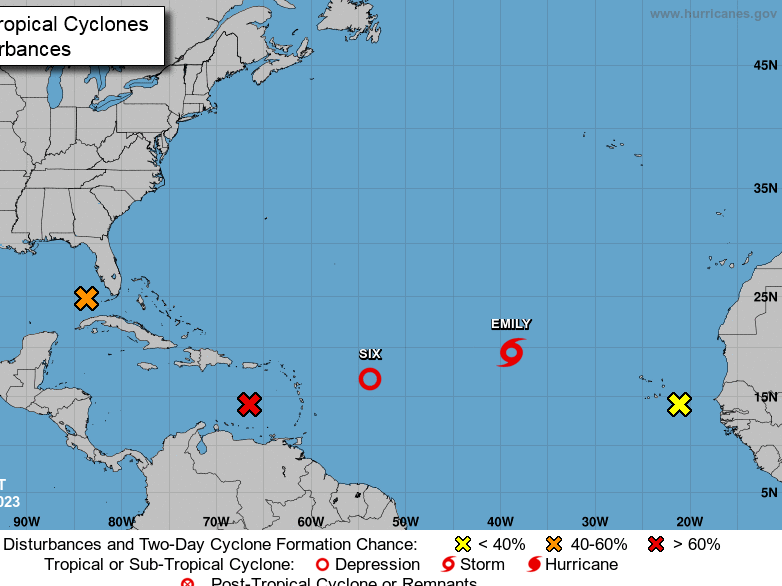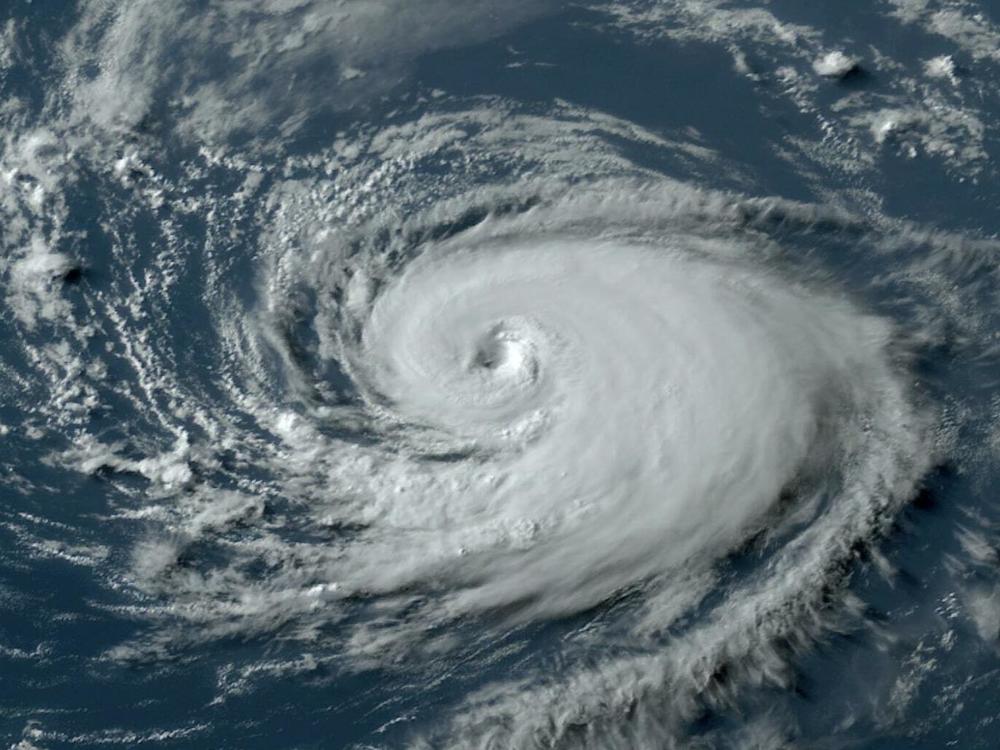Section Branding
Header Content
Tropical Storm Emily takes shape in the Atlantic, as storm activity starts to warm up
Primary Content
The 2023 Atlantic hurricane season has been rather quiet in recent weeks.
But as the season is nearing its expected peak next month, the Atlantic Ocean has suddenly become very active with multiple storms that meteorologists are watching.
Forecasters say there are several signs that the season will start to pick up in intensity and could possibly end up having more named storms than usual this year.
Scientists at the National Oceanic and Atmospheric Administration increased their prediction earlier this month for the ongoing Atlantic hurricane season — from a prediction of a "near-normal" season back in May, to now, when they say there will be an "above-normal level of activity."
NOAA forecasters named around 12 to 17 storms earlier this season. But now, the agency projects 14 to 21 storms, as their prediction now includes both tropical storms and hurricanes.
The National Hurricane Center is now tracking at least five systems in the Atlantic.
As Tropical Storm Hilary inched closer to southern California on Sunday, the agency announced that Tropical Storm Emily had developed into the fifth named storm of the season.
As of 11 a.m. ET Sunday, the National Hurricane Center said satellite data indicated that Emily was located about 100 miles west-northwest of the Cabo Verde Islands. Tropical Storm Emily had max sustained winds of 50 mph, as it was heading west-northwest at about 10 mph.
Emily is expected to continue in its current direction Sunday while holding its strength, the National Hurricane Center said. Experts predict, however, that Emily will weaken into a post-tropical remnant low by Tuesday.
About 600 miles east of the Northern Leeward Islands, forecasters are also monitoring a tropical depression that is expected to gradually weaken before dissipating on Monday, according to the National Hurricane Center.
Two of the main factors expected to influence storm activity this season are the ongoing El Niño climate pattern — which drives up global temperatures — and "record-warm Atlantic sea surface temperatures," Matthew Rosencrans, lead hurricane season outlook forecaster for NOAA's Climate Prediction Center, said in a news release.
Rosencrans said that as the updated outlook calls for more activity, everyone should begin to take precautions now for the continuing season.
The Atlantic hurricane season started on June 1 and runs through Nov. 30.
Copyright 2023 NPR. To see more, visit https://www.npr.org.


